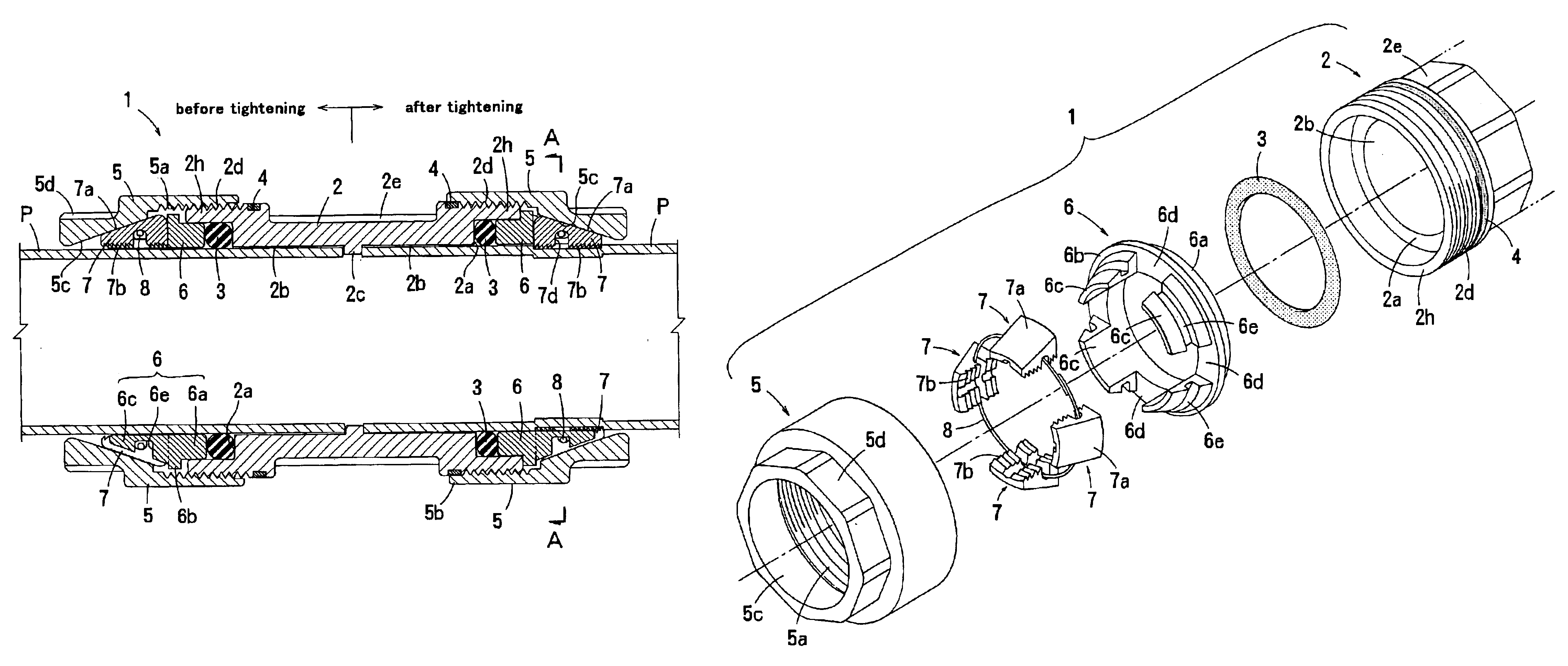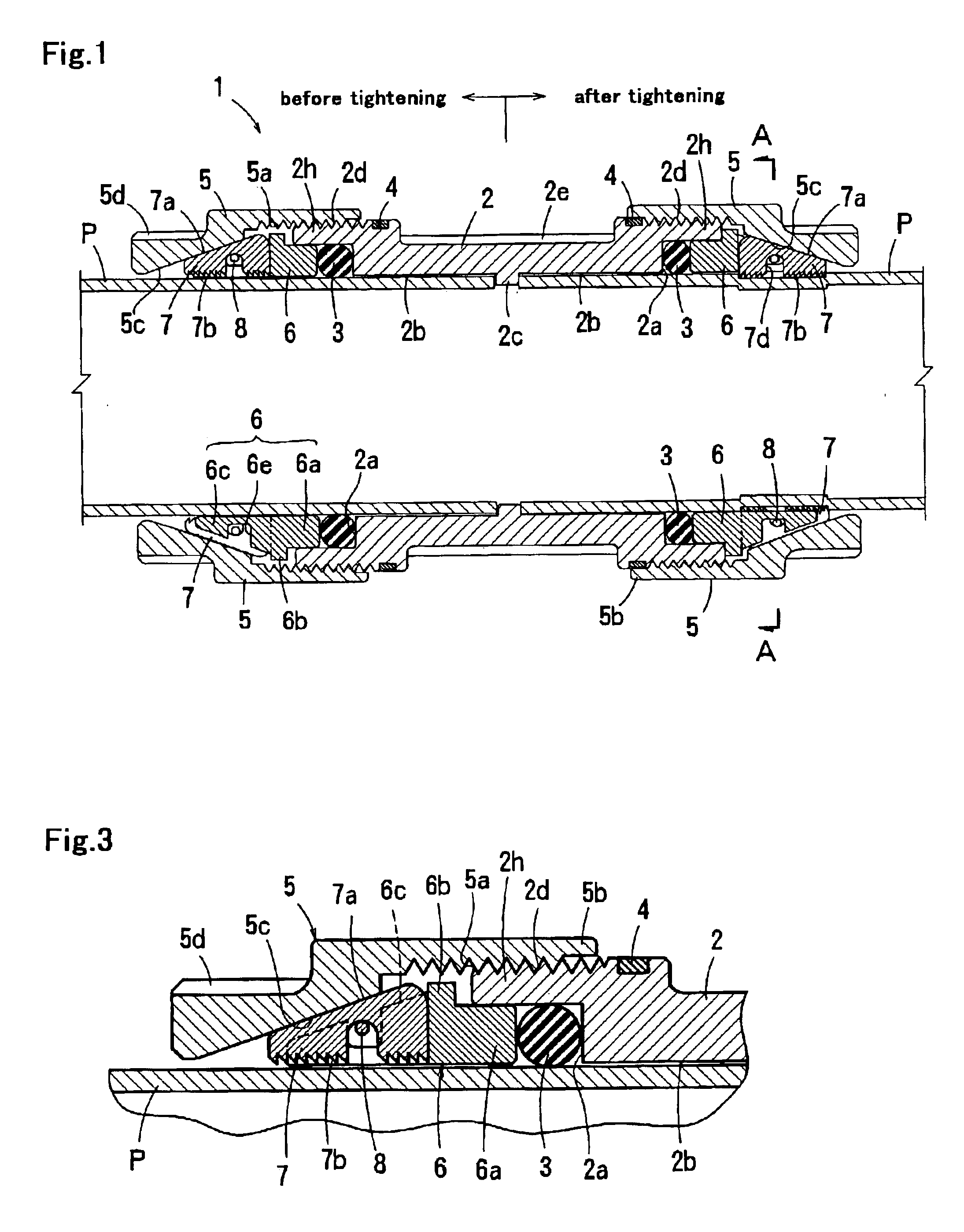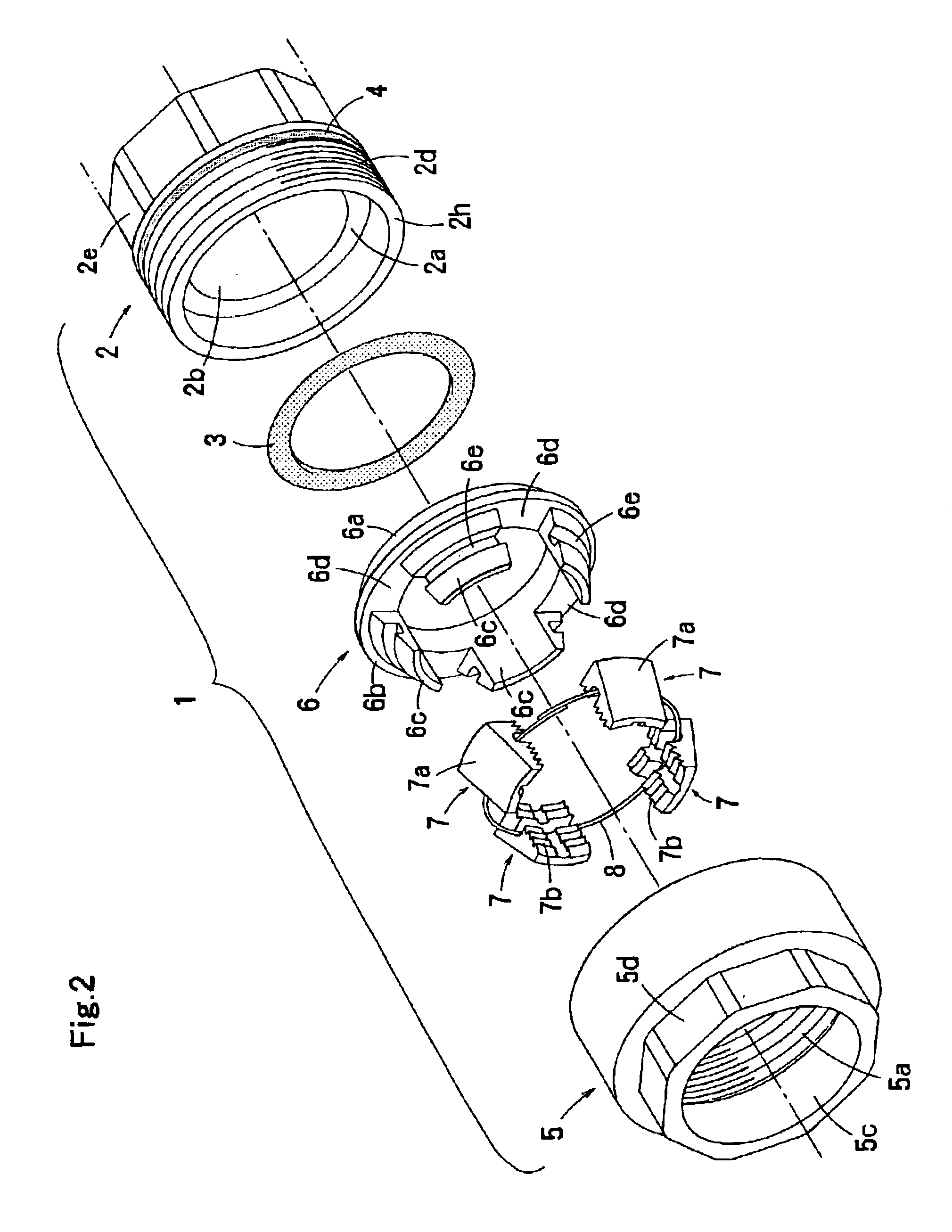Pipe-coupling device
a technology of pipe coupling and pipe thread, which is applied in the direction of fluid pressure sealing joints, hose connections, mechanical devices, etc., can solve the problems of reducing requiring a lot of time for processing screw threads, and unable to make the edge of the pressing member bite into the pipe by means of the pressing force of the coil spring alone, etc., to achieve convenient handling, reduce the number of parts, and reduce the cost
- Summary
- Abstract
- Description
- Claims
- Application Information
AI Technical Summary
Benefits of technology
Problems solved by technology
Method used
Image
Examples
second embodiment
FIG. 9 shows the present invention.
In this embodiment, the joint body 2 consists of a tubular body 2A and two sleeves 2B that are rotatably mounted on the outer periphery of the tubular body 2A on the both openings 2h. Each of the sleeves 2B has, in its outer periphery, external threads 2d to be engaged with the locknut 5. The pipe joint according to this embodiment is similar in structure to the pipe joint 1 according to the first embodiment except the joint body 2 (2A and 2B). Therefore, parts of the second embodiment identical to those of the first embodiment are denoted by the same reference numerals, to omit redundant description.
The outer periphery of the tubular body 2A and the inner periphery of the sleeve 2B have circumferential grooves 10 and 11 respectively at positions opposing to each other to form a circumferential space. A stopper ring 12 made of a split ring is inserted in this circumferential space so as to prevent the sleeve 2B from sliding in the axial direction w...
fourth embodiment
FIGS. 15 and 16 show the pipe joint according to the present invention.
In this embodiment, the core member 6, the locking members 7 and the wire 8 are attached into the locknut 5 to form a sub-assembly. Therefore, instead of the stopper ring 15 employed in the third embodiment, a claw portion 6h is integrally formed in the outer periphery of the core member 6 projecting outwardly in radial direction. The claw portion 6h engages with the inner peripheral groove 5e of the locknut 5 so as to prevent the core member 6 from dropping off in the axial direction freely. Preferably, the core member 6 in this embodiment is made of resin. Since the claw portion 6h can deflect radially, the core member 6 can be smoothly inserted into the locknut 5.
According to this embodiment, an inner flange 5f, which protrudes radially inwardly beyond the internal conical surface 5c, is formed in the inner surface of the locknut 5 at its one end in the axial direction. The inner flange 5f prevents the locking...
PUM
| Property | Measurement | Unit |
|---|---|---|
| diameter | aaaaa | aaaaa |
| thickness | aaaaa | aaaaa |
| resilient force | aaaaa | aaaaa |
Abstract
Description
Claims
Application Information
 Login to View More
Login to View More - R&D
- Intellectual Property
- Life Sciences
- Materials
- Tech Scout
- Unparalleled Data Quality
- Higher Quality Content
- 60% Fewer Hallucinations
Browse by: Latest US Patents, China's latest patents, Technical Efficacy Thesaurus, Application Domain, Technology Topic, Popular Technical Reports.
© 2025 PatSnap. All rights reserved.Legal|Privacy policy|Modern Slavery Act Transparency Statement|Sitemap|About US| Contact US: help@patsnap.com



